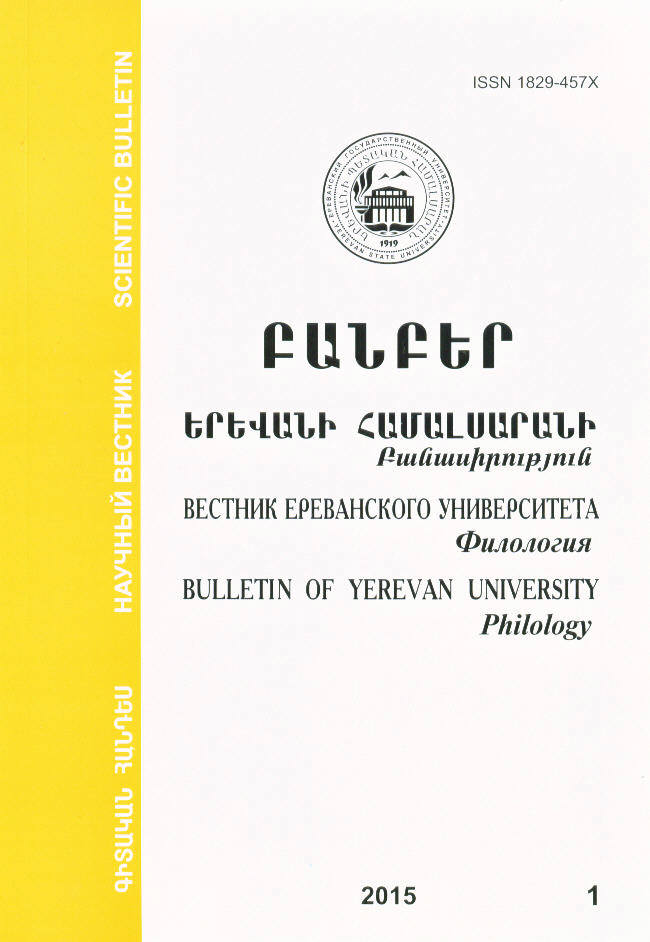Contrastive Examination of the Category of Time Correlation in English and (Sub-)category of non-Situational Time in Armenian
DOI:
https://doi.org/10.46991/BYSU:B/2015.6.1.038Keywords:
category of time correlation, (sub-)category of nonituational (nonactualized) time, simultaneity, anteriority, and posteriority to any time point in present, past, and futureAbstract
An attemp is made to show that the (sub-)category of non-situational (non-actualized) time in Armenian has much in common with the category of time correlation in English. In both languages the category of time is expressed partly by simple and partly by compound (auxiliary verb + participle) tense forms. The tense forms of the auxiliary verb indicate the given time point of reference, whereas the participles (in English in combination with the infinitive of the auxiliary, to make clear the verbal use of the participles) express non-situational (non-actualized) time meaning, that is to say, time correlation: in English – simultaneity
(to be writing), and anteriority (to have written), in Armenian – simultaneity (գրում), anteriority (գրել), and posteriority (գրելու) to any time point in present, past, or future. To put it in other way, the non-situational time meaning being correlated through the tense forms of the auxiliary verb to any time point in the planes of present, past, or future, becomes actualized and is manifested as situational (definite) time.
Published
How to Cite
Issue
Section
License
Copyright (c) 2021 Bulletin of Yerevan University

This work is licensed under a Creative Commons Attribution-NonCommercial 4.0 International License.

